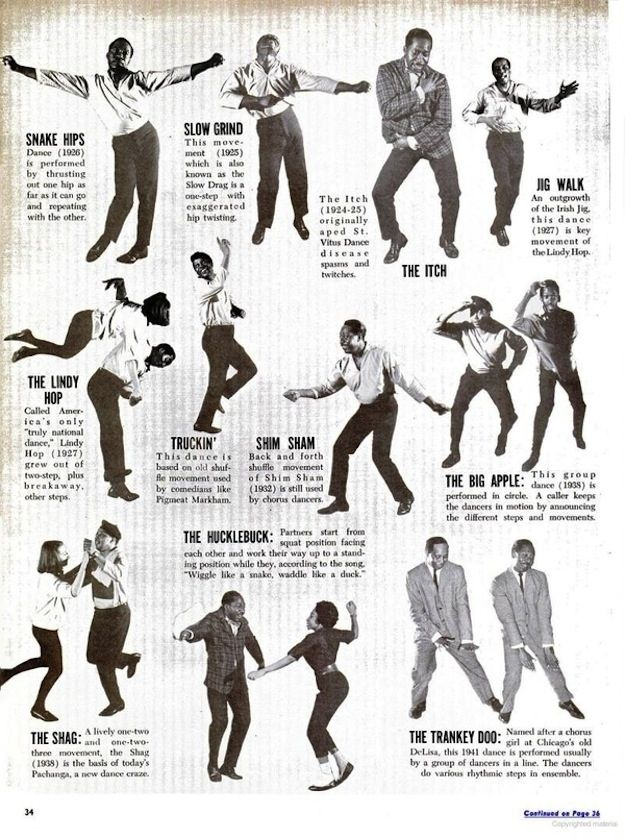How to store old dance costumes
After the Competitions: How to Store Your Dance Costumes for the Summer
- View Larger Image
Well-maintained dance costumes help you and your parents get the most from your investments. They can be handed down to younger siblings or re-purposed for the next season. And at the very least, a particularly special dance costume can be kept as a memento of hard work and achievement that can inspire young dancers.
You took time and care when the dance costumes first arrived. Take the same time and care after all the recitals and competitions are over for the season as you prepare to store them and help your parents learn how to do so — they’ll thank you for it. Here’s a simple five-point process you can share with your dancers on how to best care and store for their dance costumes.
1. Clean it. Spot cleaning may be enough at some points during recital season, but it won’t do for long-term storage. Any stain or lingering body odor will only entrench and worsen with time. The trick with cleaning a dance costume is that different fabrics need to be handled differently. And of course, dance outfits with rhinestones or appliques have their own challenges.
While it takes the most time, it’s hard to go wrong with gently hand-washing the garment in mild or cold water using a mild detergent. If you want to machine wash a costume, first do your research to find out what temperatures and detergents are safe. Never dry clean your dance costumes as the chemical processes are too harsh.
2. Dry it. Even the slightest bit of moisture will turn to mold or mildew and ruin your costume. It must be 100%, bone dry before it gets stored. First, press out the excess water between bath towels; don’t wring it out. Then you can hang it to dry — and don’t forget — no wire hangers or you’ll get rust stains! If it’s a very heavy costume dry it flat on a sweater drying rack so it doesn’t stretch out.
3. Steam out any wrinkles. Is this step strictly necessary? No, but it’s a good one because the longer wrinkles stay put, the harder they are to get out later. Steam them out; don’t iron. Then make sure to let it dry!!
Steam them out; don’t iron. Then make sure to let it dry!!
4. Wrap the costume in a protective layer. You always want to put the outfit under a breathable cover, so it doesn’t gather dust. If you’re hanging the dance costume, a cloth garment bag works well. Don’t use a plastic garment bag as that will trap air, which will turn into moisture over time. Pure cotton or muslin is best. If buying lots of muslin garment bags gets pricey, purchase muslin pillowcases Simply remove enough stitches or cut out a hole on the closed end for the hanger head to go through. Padded or wood hangers are best. If you use plastic, make sure it doesn’t have seams on it which can tear at the fabric.
If you’re storing the dance costume in a box wrap it in acid-free tissue, which you can find at any office supply store or big box store. Check the size of the tissue so you buy enough to be sure it completely wraps around the costume.
As with drying, it’s best to store a heavier costume flat so it keeps its size and shape (it won’t stretch).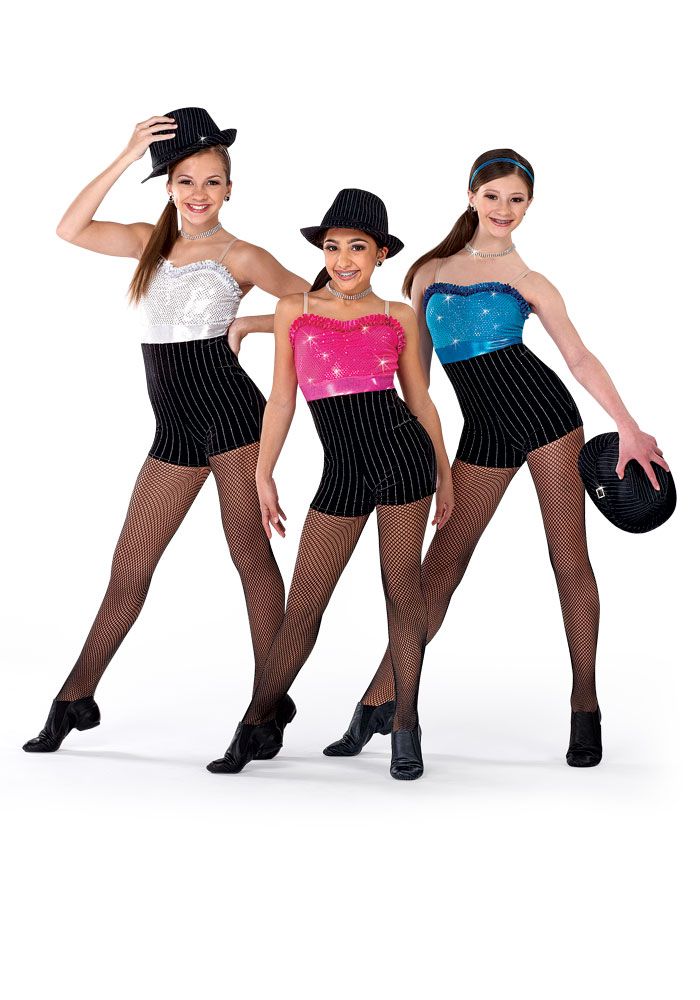 Whether hanging or lying flat, try not to fold the costume in any way. The creases won’t be pretty.
Whether hanging or lying flat, try not to fold the costume in any way. The creases won’t be pretty.
5. Store it. You want to store it in a dark, dry place. Most closets are designed to be just such spaces. Ideally, place the dance costumes in areas of the closet where they aren’t going to get moved around a lot.
Storage bonus tip: Don’t overlook the shoes! Spot wash and dry. Use shoe shapers, so they keep their shape. Dance stores have plenty of options. If you’re feeling old school, you can probably find some lambswool somewhere. Store in a shoe box.
Going the extra step for your parentsIf you’re going to prepare a dance costume storage tip sheet for the parents in your community, share it with customized dance labels for their kids’ costumes. These are the little details that can set your dance studio apart.
Search for:
Join Our Monthly Newsletter
Get the latest tips, tricks, success stories and best-in-class features.
Yes Please – Sign Me Up!
New eBook: How to Optimize Your Revenue Cycle
Increase revenue and grow your dance studio by focusing on the four core principals shared in this free download.
DOWNLOAD YOUR FREE EBOOK
Dance Studio Management Tips
Software Comparisons
› Jackrabbit Dance vs Studio Director
› Jackrabbit Dance vs Dance Studio Pro
Dance Competition & Recital Tips
Featured Articles
Dance Quotes
Popular Searches
Costume Care 101: How To Properly Store Your Dance Costume
Costume Care 101: How To Properly Store Your Dance Costume
A lot of time and effort goes into choosing and purchasing a dance costume. It is carefully looked after between uses, and you follow all the correct hints and tips on how to wash it.
You painstakingly ensure that it is kept safe and looking its best.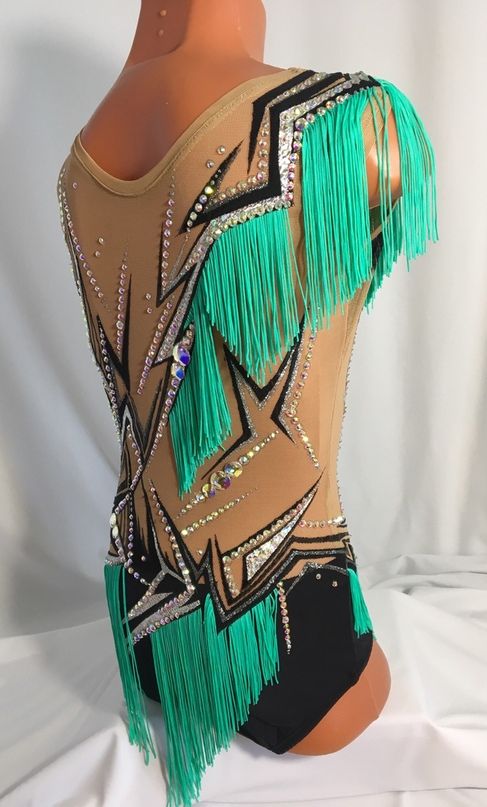 After all, when you wear that dance costume you want it to look fantastic.
After all, when you wear that dance costume you want it to look fantastic.
But if you put all the hard work into making sure it remains looking its best, the last thing you want to do is damage it by storing it incorrectly.
Every dance costume will hold wonderful memories for you. Every time you look at it in the future, even if you don't wear it again, you will be able to picture yourself the last time you wore it and how you felt when you danced. Or maybe it is your child's dance costume and you want them to always have that item to remember as they grow up.
For example this child's elegant rainbow sequin lace embellished ruffled blue dance dress pictured below. Both you and your child will have invested a lot in this costume, not to mention all the hours of dance practice and effort put in. The dance costume is simply the end product of all that hard work, and to watch your child dance in it is a once in a lifetime experience. With the proper storage this costume can be kept beautiful for years a to come.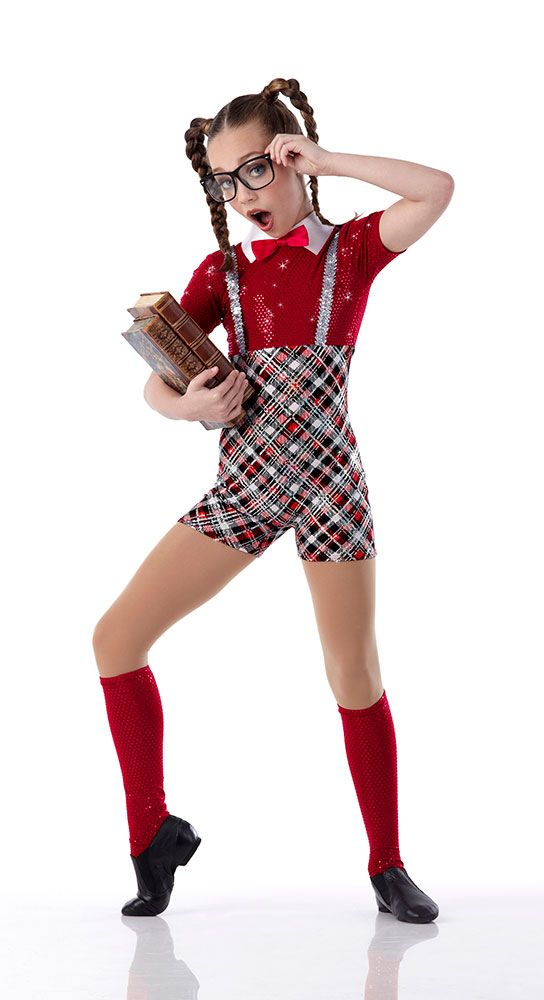
There is no one way to store dance costumes as they come in many different fabrics which may require different methods. But if you follow our tips below, you can do everything possible to ensure that with a little care and attention, your dance consumes remain dazzling and vibrant for ever.
Make Sure It Is Cleaned Properly
There is a lot of information available as to how to clean dance garments properly. The best thing we can advise is to do research as every fabric and garment may require a slightly different technique. But there is no doubt that before a garment can be stored it must be clean as any stains or smells are only going to bed themselves into the fabric and maybe even rot it away.
The general rules for cleaning dance costumes are as follows: use only warm or cold water not hot to wash the clothes, only ever use a non-bio detergent, and never get it dry-cleaned unless they guarantee its safety. It is safer for almost every dance costume to be washed, gently, by hand as dry cleaning services often use harsh chemicals and don't take any responsibility for damages. Equally, most garments will be damaged by a high heat so tumble-drying is not an option.
Equally, most garments will be damaged by a high heat so tumble-drying is not an option.
Make Sure It Is Dry
The most important point when storing costumes so that they come out looking as fantastic as they did when they were put away is to ensure that the material is completely dry. If there is even the slightest amount of damp or wetness this is going to cause mildew and mould, and leave your outfit smelly and ruined. This is especially true for clothes with lots of folds like our ruffle organza coats.
Equally, the room that you store it in needs to be totally dry and damp free. On top of this, direct sunlight is going to have a detrimental effect to garments, even ones that are inside bags, so a room that is dry and dark is key.
How To Hang Them
If you are going to hang your item to store, then it should be on plastic, wood, or padded hangers. Invest in some sturdy hangers if you can although the strong cheaper ones work well too. Avoid the metal ones as you don't know how the metal will react with the fabric over time.
Before the costumes are hung though they should be covered in muslin, or plastic if muslin isn't available. If you are only storing for a month or two then hanging most garments should be fine. However, if it is long-term storage you are going for then you want to think about what might happen to that item over time. A heavy item such as this bronze lace sheer gown with copper accented ribbon ruffled skirt (pictured below) is going to pull down and may stretch over time.
To avoid your costume stretching, or if you simply don't have space to hang them, you can place them in a dry clean, air-tight storage bin making sure you fold the garment as few times as possible.
Another tip on ensuring the costume remains in its shape is to make sure all zips, ties and buttons are fastened before it is put away.
Different Techniques
As mentioned above, there are many different styles and fabrics used for dance costumes. The storage instructions may differ between materials so carry on reading to see how to store your garment correctly.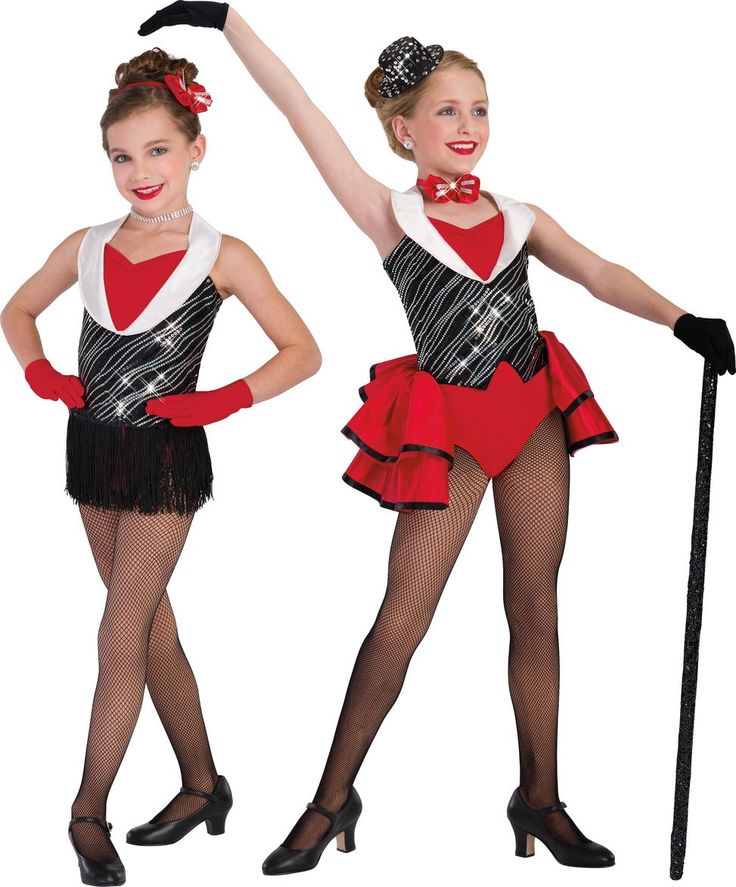
Tutus
There are several different ways to store your tutu, and lots of theories on which is the best way. They can be hung upside down on tutu trees, or if you don't happen to have one of them lying around, they can be placed in air-tight containers or tutu bags. However the one thing that everyone does agree on is that they tutus should be clean and completely dry before being put safely away. As with the general advice given above, there should be no direct sunlight on the tutus or the bags. Tutus like this black trimmed tutu pictured below are so vibrant and effervescent, you don't want that glorious colour to fade.
Shoes
The chances are that your dance shoes are going to be well worn by the time they are put away. Of all the costume pieces the shoes are likely to have been worn the most times, and may even have been used for several different dances.
There are so many different materials that dance shoes are made of and again different techniques may be required to wash them.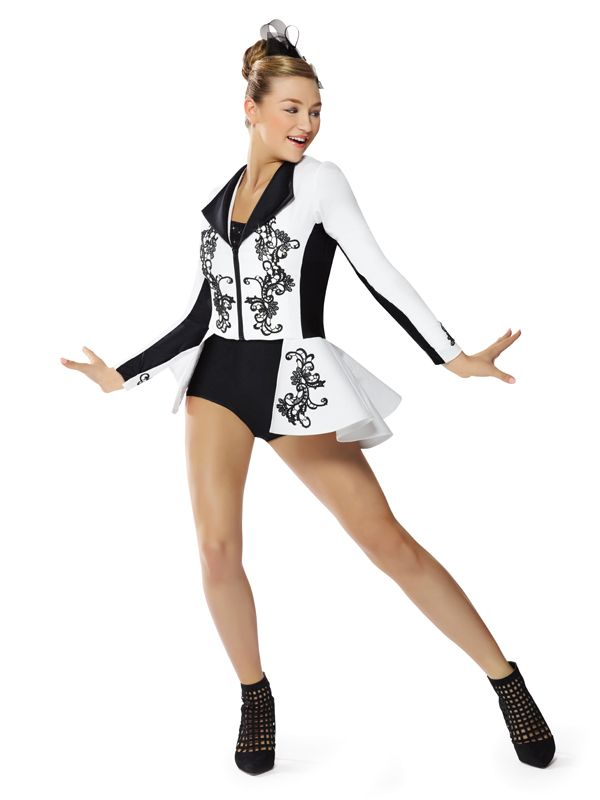 General tips include not submerging them in water, and avoid putting them in the tumble dryer as the heat may damage them. Equally, you should be looking after your shoes for example make sure you don't wear them outside of the studio, and be gentle when putting shoes on and off as manhandling them can actually damage them significantly.
General tips include not submerging them in water, and avoid putting them in the tumble dryer as the heat may damage them. Equally, you should be looking after your shoes for example make sure you don't wear them outside of the studio, and be gentle when putting shoes on and off as manhandling them can actually damage them significantly.
Once the shoe is cleaned properly, it needs to be 100% dry before you put it away. You can store the shoes for a long time in a shoe bag which can be purchased for a small amount from somewhere like Amazon. However with shoes you want them to have space to breathe as otherwise they will sweat which will cause the bacteria to grow and will make shoes dirty and smelly. Don't store the shoes in the original plastic bag you purchased them in.
Enjoy Your Dance Clothes
Buying a new dance costume can be a fun and exciting experience. People work for hours practicing their dance moves, and to wear that beautiful dress in front of others is an exhilarating and memorable experience.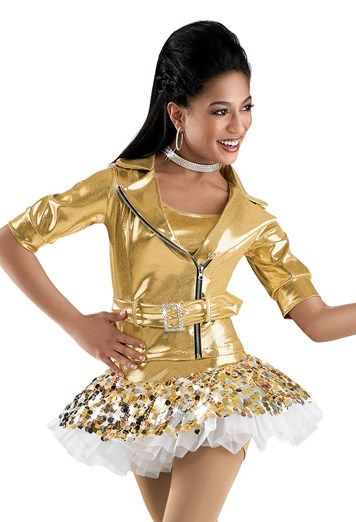 If you look after your garment properly and then store it correctly, your dance piece will remain gorgeous for years to come.
If you look after your garment properly and then store it correctly, your dance piece will remain gorgeous for years to come.
where to remove and how to store? — INMYROOM
Tips
Space expert explains how to properly pack and store clothes and shoes in a small apartment. Save our step-by-step instructions so as not to lose
Autumn has come, and summer things are still in plain sight and take up too much space. We asked a professional space organizer to tell us where to put light shoes and clothes and how to free up as much space as possible for warm clothes.
Olga Kuleshova
space organizer
Creates individual storage systems, organizes moves and draws up furniture layout plans.
An important point: always unpack your things first, and then put away the children's and husband's clothes one by one. You can even do it on different days - due to the large volume of things, there is a risk of not finishing the job.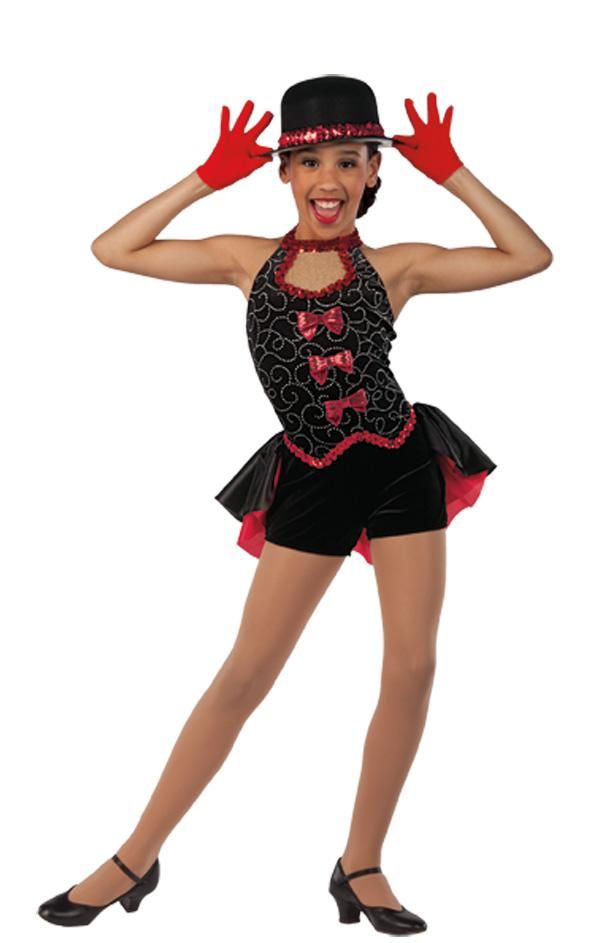
So let's get started: gather things in one place and categorize them
For example, you can put all your summer clothes on a bed and then categorize them into dresses, t-shirts, pants and shorts, skirts, hats.
Inspect each item carefully
Check the condition of the clothes and think about whether you plan to wear them next season - it's better to give them away or sell them right away so they don't take up space. And don't forget to clean or wash your clothes before putting them away.
Any defects should be corrected before the item is stored. Imagine how in the spring you take out your clothes and immediately put them on for a walk. And don't waste your time fixing it!
Pack or hang on a coat hanger
Dresses, skirts, trousers and blouses are best stored on a coat hanger to avoid deforming. Hang all your summer clothes on the side of your closet that you don't use every day. And don't forget to put light-colored things in cases so they don't get dirty.
Put things in a special box - small and shallow, otherwise it will be difficult for you to find the right thing. You can use organizers for each family member or put everything in one - if there are few things. This way you save space.
An important rule: one thing - one hanger!
Design: Elena Dadiani
Do not forget labels
How to quickly find the right thing? Sign it in the format: "summer, name". For example: "summer, son, 3 years old" (age can be indicated if you leave the things of the older child for the younger one). For clarification, you can add categories of things.
And about accessories
Summer hats, scarves and hats are also better to put in one place.
Where to store clothes organizers?
On the shelves in the closet or on the mezzanine - they definitely won't bother you there. If there is no space on the upper shelves, look at what is stored there - perhaps these are old things that you no longer need.
If you can't put your clothes upstairs, hide them under the bed or in drawers under the bed. By the way, the size of organizers can be immediately selected based on the size of the shelves or drawers in which they will be stored.
Keep all the organizers in the same style and pastel shades - it looks neat.
What about shoes?
The scheme is about the same as with clothes: first, shoes need to be cleaned and defects removed. Then it can be put into organizers with dense walls and a bottom. Life hack: if you cut out partitions, shoes of any size will fit in them.
Shoes can be hidden in the upper or lower part of the closet, as well as under the bed. Or use the vertical storage method and attach a few shelves to the wall (and save budget and space).
And don't forget to sign the organizers and boxes or stick a photo of the couple inside. This way you will quickly find your favorite shoes or sneakers in spring.
Cover photo: Julia Bariskina
How to properly store woolen clothes
storage rules life hacks for housewives for woolen clothes clothing care
A cashmere coat, a business suit made of fine wool, a warm sweater made of delicate merino or angora fibers - such things never go out of fashion, delighting us with their elegance, giving warmth and comfort in the winter cold.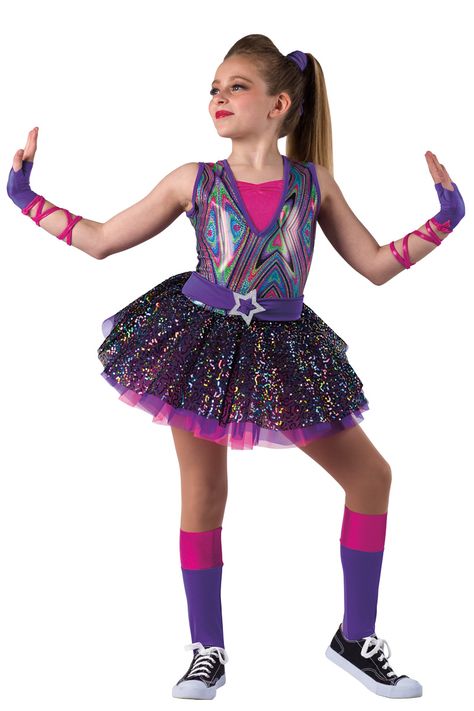 High-quality clothing made from natural fiber is not cheap and it's a shame when, having taken it out after seasonal storage, we find a deformed silhouette, an unpleasant smell of dampness, or, even worse, holes left by a voracious moth.
High-quality clothing made from natural fiber is not cheap and it's a shame when, having taken it out after seasonal storage, we find a deformed silhouette, an unpleasant smell of dampness, or, even worse, holes left by a voracious moth.
To prevent this from happening to your clothes, we suggest writing down a few simple and proven rules for storing woolen items in the owner's notebook . But first, a few words about the properties of natural fibers.
Features of wool fiber
Wool is the hair of animals cut and processed in special ways - goats, sheep, llamas, rabbits and others. Animal origin determines the composition and fiber properties .
1. Wool products are distinguished by hygroscopicity and breathability - all this is due to the fact that each hair of the material inside is hollow . Accordingly, during storage, the fibers need to breathe .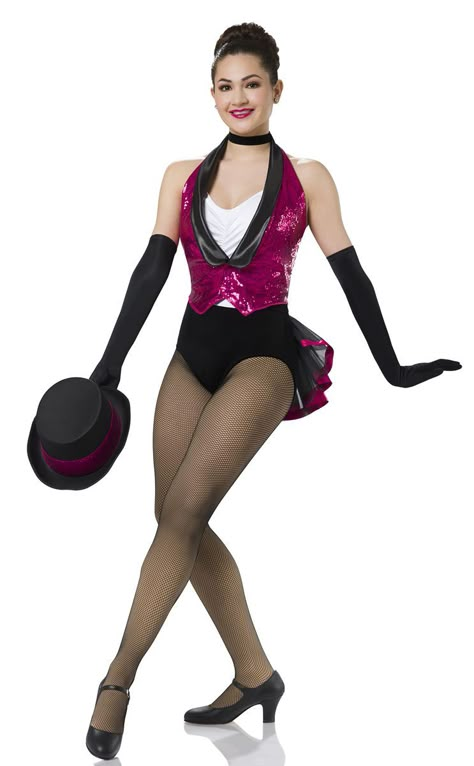
2. High hygroscopicity promotes moisture absorption, while the material remains dry to the touch for a long time. Therefore, before storing thing is necessary dry properly , otherwise this property can play a cruel joke - over time, an unpleasant musty smell of dampness or even mold will appear.
3. The cut hair is characterized by crimp, which, after processing, gives elasticity to the fibers. The same quality leads to deformation of the finished product during washing, if the fiber is twisted and dried in a suspended state or stretched under its own weight during storage.
4. Wool does not like high temperatures, at which the loss of the natural moisture of the fiber occurs. It becomes brittle, rough to the touch, white things turn yellow.
5. A real thunderstorm of products from woolen and semi-woolen fabrics - mole. The fight against it will be effective if not limited to repellents, but keep things dry and, most importantly, clean.
Preparing for storage
The first rule , which should be remembered when storing things, and not only woolen ones - they must be clean and dry .
Coats and suits, before being hung in a closet, are cleaned of dirt and dust with a soft brush. Pay special attention to the inside of the collar and cuffs - in contact with the body, they absorb the remnants of fat secreted by the skin. The latter, gradually decomposing, "eat" into the fiber, emit an unpleasant odor. With more serious contamination, coats and expensive suits are dry-cleaned.
Sweaters, sweaters, scarves are washed in warm water with mild detergents containing lanolin - natural animal fat. It is recommended to add vinegar or fabric softener to the rinse water. Washing mode - manual, spinning - without twisting, drying - in a horizontal position.
Tip! To eliminate the smell of sweat from wool, restore the elasticity of the fiber, it is enough to hang the thing for several hours in a bathroom filled with hot steam, and then dry it in the open air.
The same effect is produced by airing sweaters in foggy weather.
Moisture during storage is one of the worst enemies of wool fiber, so items must be dried before laying especially carefully . During the day they are aired in the room or on the balcony. A good effect is roasted in the sun, which not only dries out excess moisture, but also destroys moth larvae.
Clean, dried and ventilated items can be safely packed until the next season.
Hit
Red cedar moth rings (12 pcs)
DP
34x4x1 cm
available 557 q
Set of voluminous covers for clothes BOTANIC Valiant (2 pcs, 100 and 137 cm)
BT-CV-S137S10060x10x137 cm
available 1 232 q
Set of small storage cases (2 pcs, white, 30x40x20 cm)
WHT-S-240x30x20 cm
available 299 q
Red cedar moth rings (12 pcs)
Art.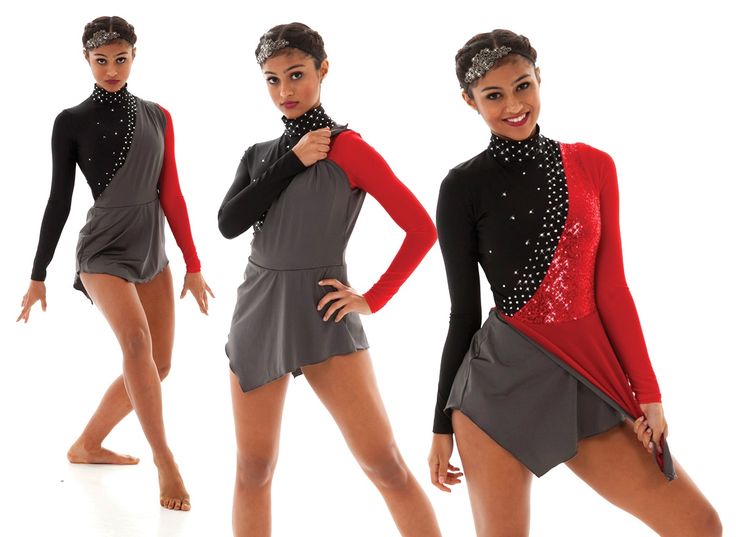 DP
DP
3
available
557 q
Set of voluminous covers for clothes BOTANIC Valiant (2 pcs, 100 and 137 cm)
Art. BT-CV-S137S100
available
1 232 q
Set of small storage cases (2 pcs, white, 30x40x20 cm)
Art. WHT-S-2
available
299 q
Storage
The next step is to choose the right storage method.
What do we keep on hangers?
Outerwear and fine cloth items (suits, dresses) are stored on clothes hangers. It is important to choose the appropriate size and shape. The coat needs strong wooden coat hangers with a wide wing that can support 5-7 kg of weight. The extended edge will securely fix the shoulder, will not allow the coat to sag under its own weight.
The costume option is a hanger less massive, but also wooden, anatomically shaped, with wide rounded wings.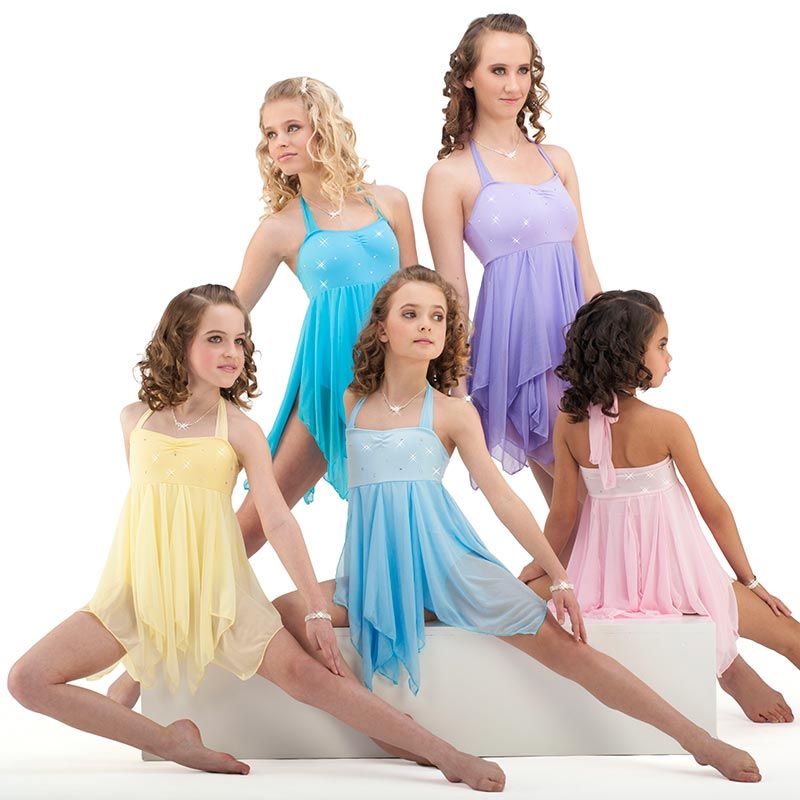 On properly selected coat hangers, the jacket "sits" as if worn without sagging. For long-term storage, crumpled tissue paper can be placed in the sleeves for safety - it promotes air circulation. It is better to hang trousers not by loops, but by fastening them to the bottom edge of the leg with clips.
On properly selected coat hangers, the jacket "sits" as if worn without sagging. For long-term storage, crumpled tissue paper can be placed in the sleeves for safety - it promotes air circulation. It is better to hang trousers not by loops, but by fastening them to the bottom edge of the leg with clips.
For knitwear, you can also use special soft hangers (fabric or foam-coated). They must be exactly the size of the thing and strong so that the edges do not bend under the weight of the product. However, even soft coat hangers are not suitable for thin knitwear. In extreme cases, a light blouse or dress can be hung on a fabric hanger on the eve of use so that the thing straightens out.
To protect the product from dust, light, moisture, special storage covers for clothes with water and dirt-repellent impregnation are used. Woolen items require covers made from breathable materials, such as non-woven fabric.
How to store sweaters, jackets, knitwear?
Fluffy hand-knitted sweaters, knitwear are stored folded on shelves in a closet, wardrobe trunks or boxes.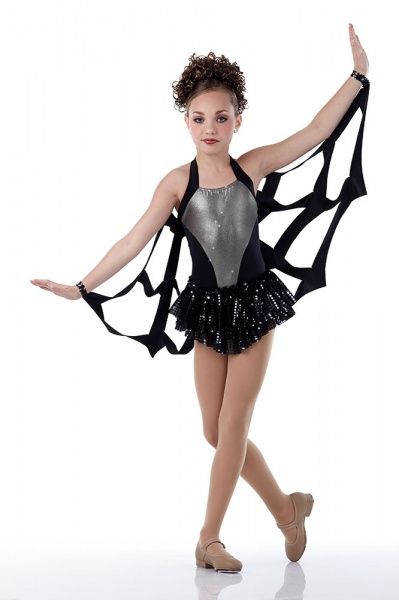 Memorize a few simple tips .
Memorize a few simple tips .
• Place fluffy items on top of heavier fabrics to keep the fiber bouncy.
• Do not store more than three wool sweaters in stacks of . To make things breathe better, place tissue paper between them.
• Use closed boxes and cases for storage of made of breathable materials - cardboard, spunbond, linen, canvas. In such containers, clothes will be reliably protected from dust, foreign odors, penetration of moth butterflies, shifting things from place to place.
• Do not store sweaters and knitwear on hangers. Under their own weight, they will stretch out, lose their elasticity, and you will no longer be able to return things to their original appearance and size.
Can woolen items be stored in vacuum bags?
One of the modern ways of long-term storage of things is vacuum bags.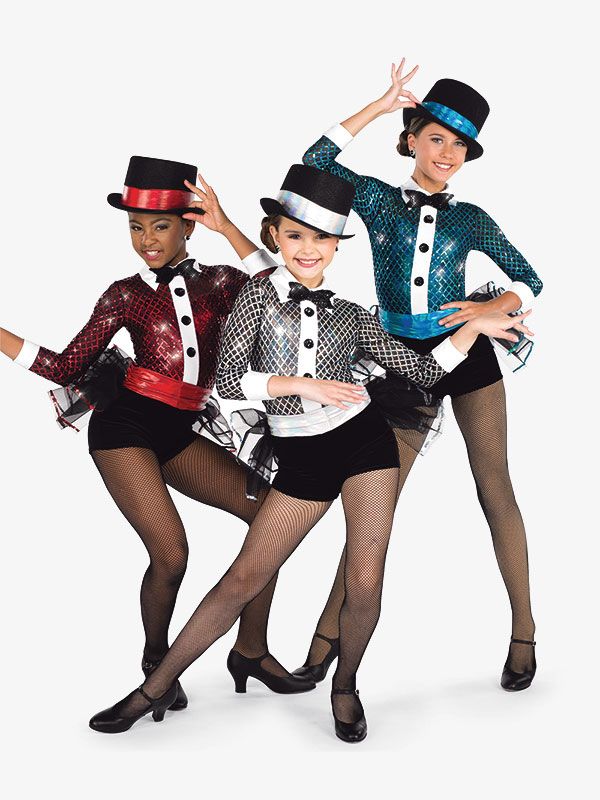 Many housewives prefer them because of the significant space savings and reliable protection of the contents from many adverse factors - the same dampness, dust, moths, etc.
Many housewives prefer them because of the significant space savings and reliable protection of the contents from many adverse factors - the same dampness, dust, moths, etc.
We would not recommend using vacuum bags for pure wool garments. Firstly, there is no air circulation in a vacuum environment, and secondly, a thing may lose its fluffiness somewhat.
But sports suits, other knitwear containing, in addition to wool, artificial additives, will feel quite comfortable even in a vacuum. Vacuum bags are indispensable for storing bulky wool blankets and blankets. A prerequisite is to knock them out from dust before sealing, dry them in the sun. Vacuum storage kits have appeared on sale and are gaining popularity, including bags and cases suitable for them in size.
Vacuum packaging is a very convenient and useful thing, but there are a few rules that you can follow to get the most out of it. You can read about the features of choosing bags in the article "How to choose the size of a vacuum bag"
Moth protection
In nature, moths lay their eggs in bird nests and burrows, consisting of feathers and crumbled wool, therefore, in wardrobes, they are primarily attracted to products made from this material.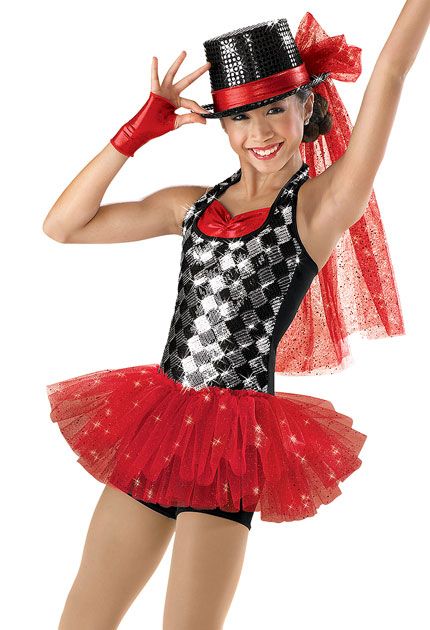 Holes in clothes are eaten by moth larvae, of which cannot be destroyed with repellents , so if you notice a butterfly in the closet, be sure that it took care of the offspring ... That is, moth protection occurs in 2 stages: the destruction of eggs and larvae and the repelling of butterflies.
Holes in clothes are eaten by moth larvae, of which cannot be destroyed with repellents , so if you notice a butterfly in the closet, be sure that it took care of the offspring ... That is, moth protection occurs in 2 stages: the destruction of eggs and larvae and the repelling of butterflies.
You can get rid of eggs and larvae by washing, shaking vigorously, airing and drying woolen products in the sun.
Further, measures must be taken to scare away moth butterflies from the wool so beloved to her heart. There are many old and new ways to do this:
• dried leaves and flowers of lavender, geranium, tobacco, orange peels;
• specially made sachets of lavender, sandalwood, cloves, which not only repel moths, but also play the role of flavoring, anti-moth cedar products;
• repellents in tablets, liquid or spray (vapotrin, permethrin, etc.)
Bags with grass or a tablet preparation are placed in the pockets of coats and jackets, the hood, the lapels of the cuffs, they are laid between the sweaters, folded in a pile, fixed on the crossbar in the case.



